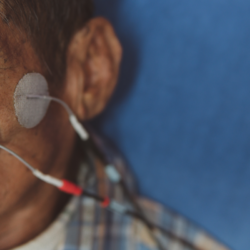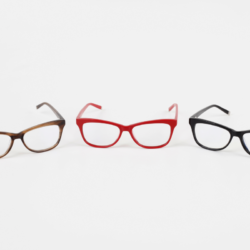Drowsiness, cataplexy, hallucinations… Narcolepsy can cause a number of problems. This sleep disorder can be triggered at any time of the day. And unfortunately, there’s not much you can do about it. We’re often helpless in the face of this disease, and we have no control, or so we think. In fact, although this disorder is a real ordeal, rest assured that it is possible to manage it and live with it. Treatment, routine and vigilance are the key to success. What is narcolepsy? How do you manage your day-to-day life when you have narcolepsy? Find out in the following paragraphs.
Narcolepsy in brief
Also known as “Gélineau’s disease”, narcolepsy is a sleep disorder that affects around 1 in 2,000 people. To be more precise, it is a rare neurological disorder characterised by hypersomnia. Individuals suffering from this disorder are prone to uncontrollable and sudden onset of sleep. This can happen at any time of day, right in the middle of an activity, and not just once.
To go a step further, research has led to the hypothesis that narcolepsy is in fact an autoimmune disease. Certain cells attack the hypocretin neurons, neuropeptides generated in the brain nucleus that regulate sleep.
There are two forms of narcolepsy: type 1 and type 2.
Type 1 narcolepsy
Accompanied by cataplexy, type 1 narcolepsy is the complete form of narcolepsy. People with this disorder have bouts of sleep combined with sudden drops in muscle tone. This happens in response to a strong emotion (laughter, fear, surprise, etc.), and the person experiences muscle numbness and falls to the floor. They are then unable to move for several minutes, even if they are conscious. Hallucinations can also occur, particularly when tired. In a state of somnolence or sleepiness, narcoleptics see scenes, characters and/or feel a presence close to them.
Type 2 narcolepsy
Narcolepsy type 2 is a subtle form of narcolepsy which is more difficult to diagnose than narcolepsy type 1. Unlike the latter, type 2 narcolepsy is not accompanied by cataplexy, but is characterised instead by falling asleep during REM sleep, which is an abnormal phenomenon during the day. People with this form of narcolepsy may feel very tired and have an irresistible urge to sleep during the day, even after a sufficient night’s sleep. This form of narcolepsy is often confused with other sleep disorders such as sleep apnoea or restless legs syndrome, which makes diagnosis more difficult. It is therefore important to consult a doctor specialising in sleep disorders for an accurate diagnosis and appropriate treatment.
Am I narcoleptic?
Narcolepsy is genetically inherited. It is quite possible to meet narcoleptic families, especially if the members have the HLA DR2-DQw1 gene.
It is also possible that you are narcoleptic if you have the symptoms listed above, i.e. an irrepressible need to sleep, cataplexy, a sudden and temporary paralysis that can occur on waking, and/or hallucinations.
In any case, to find out if you have narcolepsy, you need to go to a highly specialised sleep laboratory with the SFRMS label. In this type of centre, a number of tests will be carried out, including a series of polysomnographies, a long-term sleep recording, and cerebrospinal fluid measurements to see if there is a drop in hypocretin.
Diagnosis of narcolepsy
Diagnosing narcolepsy is a complex process that requires a thorough assessment of the patient’s symptoms, as well as a number of specific medical tests and examinations. This is crucial in distinguishing narcolepsy from other sleep disorders that may present similar symptoms.
Diagnostic process
The diagnostic process generally begins with a detailed clinical examination. The medical specialist, often a neurologist or sleep specialist, will begin by gathering full information about the patient’s medical history, including symptoms experienced, their frequency and duration. Specific questions will be asked to identify the characteristic signs of narcolepsy, such as excessive daytime sleepiness, cataplexy (sudden muscle weakness, often triggered by strong emotions), hypnagogic hallucinations (visual or auditory hallucinations when falling asleep or waking up), and sleep paralysis (temporary inability to move or speak when falling asleep or waking up).
In addition to the clinical interview, the doctor may ask the patient to keep a sleep diary for several weeks, recording his or her sleep patterns and any episodes of sleepiness or cataplexy. This diary helps to provide an accurate picture of the patient’s sleep and wake patterns.
Tests and examinations
Once the initial information has been collected, specific tests are carried out to confirm the diagnosis of narcolepsy. The main tests include :
- Polysomnography: This examination is carried out over an entire night in a centre specialising in sleep studies. The patient is connected to various devices that record brain activity, eye movements, heart rate, breathing and blood oxygen levels during sleep. This test makes it possible to assess sleep phases and identify abnormalities that could indicate narcolepsy, such as rapid entry into REM sleep.
- The Iterative Sleep Latency Test (ISLT): Usually performed after polysomnography, the ISLT assesses how quickly the patient falls asleep under calm conditions during the day. The test consists of several short naps spread over an entire day. People with narcolepsy generally fall asleep quickly and quickly enter REM sleep.
In some cases, blood tests may also be carried out to look for genetic markers associated with narcolepsy, although their absence does not rule out the disease definitively.
Diagnosing narcolepsy is therefore a process that combines in-depth clinical analysis of symptoms with specific tests. This approach makes it possible not only to confirm the presence of narcolepsy but also to rule out other sleep disorders that could be involved.
How can you live better with narcolepsy on a day-to-day basis?
Narcolepsy is a sleep disorder that can be a source of many inconveniences in everyday life. Although there is no cure for the condition, specialists are working to find ways of managing it more effectively.
Acceptance
It’s true that it’s difficult to admit to yourself that you have narcolepsy. Fear overwhelms us and we don’t even want to think about it. But being in denial won’t help you get better. Specialists and psychologists agree that accepting your illness is the first step towards recovery. The sooner you realise that you have narcolepsy, the sooner you can get on with your life. That’s because you’ll be able to follow your doctor’s instructions and treatments.
Follow the specialist’s treatment and instructions
Generally, when you have narcolepsy, your doctor will prescribe treatments to combat the symptoms of cataplexy and drowsiness: amphetamines, stimulants, antidepressants, etc. However, not everyone has the same symptoms. So it’s possible that your prescription will contain just one treatment to ensure you get a good night’s sleep. And in the best case scenario, all you’re told is to take naps at specific times of the day. That way, you’ll be able to do all your chores without too much difficulty.
Whatever the case, it’ s essential to follow the instructions of your specialist to the letter, and make a routine of it.
Be vigilant
On the web, many testimonies indicate that narcolepsy is a real danger for oneself as well as for others. Some people were at the wheel when the seizures started, others were in the swimming pool, others were looking after their baby… Faced with these problems, you need to be careful at all times and be predictable. Driving, for example, should be avoided. Swimming and other potentially dangerous activities require at least one accompanying adult. Do you have a baby? Don’t hesitate to hire a nanny who can help you look after him. In short, be responsible for yourself and those around you.
What drug treatments are available?
Medical treatments for narcolepsy are mainly aimed at controlling the symptoms, as there is no definitive cure for the condition. Therapeutic approaches have evolved over time, with the introduction of newer, more effective drugs.
- Stimulants for excessive daytime sleepiness: Historically, stimulants were the first drugs used to treat excessive daytime sleepiness associated with narcolepsy. They work by increasing wakefulness and reducing the tendency to fall asleep during the day.
- Modafinil: Modafinil is a common treatment for daytime sleepiness. It is considered to have a good safety profile and is generally well tolerated, but may have certain side effects such as headaches or insomnia.
- Antidepressants for cataplexy: Antidepressants, particularly those in the selective serotonin reuptake inhibitor (SSRI) and tricyclic classes, are often used to treat cataplexy symptoms. They can help stabilise the emotional state and reduce the incidence of cataplexy episodes.
- Sodium oxybate (gamma-hydroxybutyrate): Sodium oxybate is effective for both excessive daytime sleepiness and cataplexy. It is considered one of the most effective treatments for narcolepsy, but its use is strictly regulated due to its potential for abuse and serious side effects.
- Pitolisant and solriamfetol: These drugs are more recent options for treating daytime sleepiness. Pitolisant works by increasing the release of histamine, a neurotransmitter associated with wakefulness, while solriamfetol works by stimulating dopaminergic and noradrenergic activity.
- Methylphenidate and amphetamine derivatives: These stimulants are sometimes used, but with a lower recommendation due to their potential for abuse and side effects.
It is important to note that the choice of treatment should be tailored to the patient’s symptoms, co-morbidities, tolerance and the risk of potential drug interactions. Furthermore, the treatment of narcolepsy generally involves a combination of pharmacological and non-pharmacological approaches.
What diet should I follow for narcolepsy?
A balanced diet can also help people with narcolepsy to manage their day-to-day lives more effectively. Certain foods can promote sleep, while others can disrupt it. It is therefore important to favour foods rich in essential nutrients such as vegetables, fruit, proteins and healthy fats, while avoiding foods that are too fatty, too sweet or too high in caffeine. In addition, it’s advisable to eat small, regular meals throughout the day rather than large, heavy meals, as this can help to maintain stable energy levels and avoid sudden fluctuations in blood sugar levels, which can worsen drowsiness. Finally, it is important not to drink alcohol before going to bed, as this can disrupt sleep and lead to night-time awakenings that worsen daytime tiredness.





